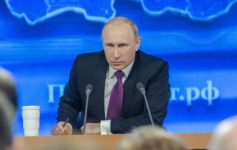It becomes almost trite to look back on the attacks of September 11, 2001 each year, but I cannot help but to think about that fateful day upon each anniversary. It was a transformative event in U.S. history and a day I vividly remember like few others. There is so much we have to lament (my analysis from last year remains unchanged), but I want to be little more positive today.
Caught in the midst of a mud-slingling presidential election, where each candidate and his surrogates tries to tear the other down rather than offer any semblance of true “hope and change”, it is easy to lose sight of the great good in America. That good was exemplified by United Airlines Flight 93, the flight that passengers and crew fought back on and succeeded in preventing catastrophic destruction in Washington, DC. Lest we forget, here’s a concise summary from the History Channel about what happened onboard 11 years ago today:
Flight 93 Comes Under Attack
United Airlines Flight 93, a regularly scheduled early-morning nonstop flight from Newark, New Jersey, to San Francisco, California, departed at 8:42 a.m., just minutes before the first hijacked plane struck the World Trade Center. The flight’s takeoff had been delayed for nearly 45 minutes due to air traffic at Newark International Airport. The plane carried seven crewmembers and 33 passengers, less than half its maximum capacity. Also on the flight were four hijackers who had successfully boarded the plane with knives and box cutters. The plane’s late departure had disrupted the terrorists’ timeline for launching their attack; unlike the hijackers on the other three planes, they did not attempt to gain control of the aircraft until nearly 40 minutes into the flight.
Meanwhile, Ed Ballinger, a flight dispatcher for United Airlines, was taking steps to warn flights of possible cockpit intrusions. At 9:19 Ballinger informed pilots of the attacks on the World Trade Center; Flight 93 received his transmission at 9:23. Captain Jason Dahl responded at 9:26 to request clarification. At roughly 9:28 the terrorists successfully infiltrated the plane’s cockpit, and air traffic controllers heard what they believed to be two mayday calls amid sounds of a struggle. At 9:32 a hijacker, later identified as Ziad Jarrah, was heard over the flight data recorder, directing the passengers to sit down and stating that there was a bomb aboard the plane. The flight data recorder also shows that Jarrah reset the autopilot, turning the plane around to head back east.
Flight 93’s Passengers Fight Back
Huddled in the back of the plane, the passengers and crew of Flight 93 made a series of calls on their cell phones and the in-flight Airfones, informing family members and officials on the ground of the plane’s hijacking. When they learned the fate of the three other hijacked flights in New York City and Washington, D.C., the passengers realized that their plane was involved in a larger terrorist plot and would likely be used to carry out further attacks on U.S. soil. After a brief discussion, a vote was taken and the passengers decided to fight back against their hijackers, informing several people on the ground of their plans. One of the passengers, Thomas Burnett Jr., told his wife over the phone, “I know we’re all going to die. There’s three of us who are going to do something about it. I love you, honey.” Another passenger, Todd Beamer, was heard over an open line saying, “Are you guys ready? Let’s roll.” Sandy Bradshaw, a flight attendant, called her husband and explained that she had slipped into a galley and was filling pitchers with boiling water. Her last words to him were: “Everyone’s running to first class. I’ve got to go. Bye.”
At 9:57 the passengers and crew aboard Flight 93 began their counterattack, as recorded by the cockpit voice recorder. In response, the hijacker piloting the plane began to roll the aircraft, pitching it up and down to throw the charging passengers off balance. Worried that the passengers would soon break through to the cockpit, the hijackers made the decision to crash the plane before reaching their final destination. At 10:02 a voice was recorded saying, “Yes, put it in it, and pull it down.” Several other voices chanted “Allah is great” as the plane’s controls were turned hard to the right. The airplane then rolled onto its back and plowed into an empty field in Shanksville, Pennsylvania, at 580 miles per hour. Flight 93’s intended target is not known, but it is belived that the hijackers were targeting the White House, the U.S. Capitol, the Camp David presidential retreat in Maryland or several nuclear power plants along the Eastern seaboard.
Flight 93: The Shanksville Crash Site
The fireball from the plane, which was carrying 7,000 gallons of fuel, scorched hundreds of acres of earth and set the surrounding trees ablaze for hours. The crash site near Shansksville was littered with the wreckage from the fragmented plane, with a debris field scattered nearly eight miles away from the initial point of impact. Despite the devastation, investigators were able to recover both the plane’s flight data recorder and cockpit voice recorder, or black box, which was found burrowed more than 25 feet below ground. Though few human remains were recovered at the site, medical examiners were eventually able to positively identify the 33 passengers, seven crewmembers and four hijackers aboard Flight 93.
Remembering Flight 93
In the weeks following the September 11 attacks, temporary memorials to the victims of United Flight 93 were erected at the Pennsylvania crash site and elsewhere, and in 2002 Congress established the Flight 93 National Memorial to create a permanent tribute to the plane’s passengers and crew. The first phase of the memorial was completed in time for the 10th anniversary of the terrorist attacks in September 2011. Administered by the National Park Service and encompassing more than 2,220 acres, the memorial will eventually include a visitor center, memorial tree groves, a mile-wide Field of Honor and the crash site itself, known as “Sacred Ground”—the final resting place of the heroes of Flight 93.
There were many more who gave their lives on 9/11/01 than the crew and passengers of United 93, but of all the heroism displayed that day, this event makes me proudest to be an American.
Unlike the brave fireman and police officers who sacrificed their lives in New York City, there was no sense of duty that pushed these passengers to fight other than a sense of selflessness–a desire to sacrifice to serve the greater good. What virtue in such an attitude! It is the sort of situation that we all hope never to find ourselves in, yet hope that if faced with similar circumstances we would act in a similar fashion.
As you reflect on 9/11, consider donating to the Jason Dahl Scholarship Fund this year.
The family and friends of Captain Jason Dahl strive to be more like him. It is for this reason we serve on the board of his scholarship fund. We look forward to serving our neighbors as he did; in this case, providing needed funds to students of aviation whose achievements are based on sound merit and whose resources are limited.
If there is one bit of good that we can take away from the 9/11 attacks, it is that it brought out the best among us. Though that goodwill and sacrifice quickly faded, the fact that it even surfaced for those few weeks in September and October 2011 helps to put things in perspective and reminds us that we can do much better as a people and as a nation.




Leave a Reply